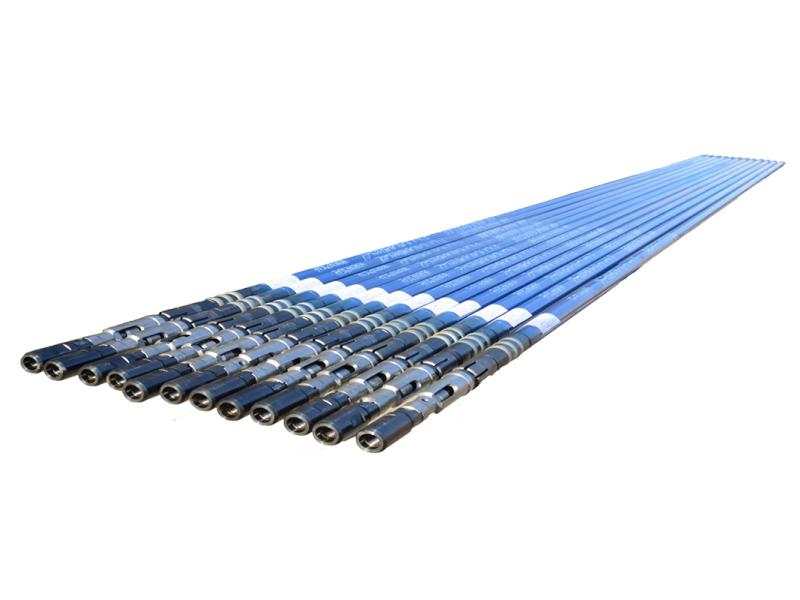There are many reasons for oil well pump inspections, which can be summarized into three categories:
First, periodic inspections based on the pumping well's production patterns; second, production stoppages caused by sudden failures in the pumping well, primarily involving sucker rod pump failures; and third, pump replacements or deeper drilling to increase production. These inspections can be broken down into the following categories:

1. Oil Well Wax Inspections:
Wax accumulation in oil wells can cause wax or other debris to stick to the floating or fixed valves of sucker rod pumps, leading to pump failure or tubing blockage. To prevent wax accumulation, pump inspections are required after a certain period of production, according to the wax accumulation patterns of the well. Sometimes, wax sticking or wax blockages force production stoppages, necessitating inspections. Currently, oil fields have implemented extensive preventative measures to prevent wax precipitation in tubing, but wax sticking and wax blockages still occur in wells with severe wax accumulation.
2. Pump Leakage Inspection:
Increasing leakage from sucker rod pumps due to wear and tear can cause well production to decline or even fall below normal production, leading to reduced sucker rod pump efficiency and requiring pump inspections.
3. Sand Stuck and Sand Blockage Inspection:
To increase well production, oil fields often implement fracturing to stimulate production in some pumping wells. After fracturing, the fracturing sand, used as a proppant, flows into the pump barrel along with the crude oil during pumping. Some of this sand can deposit on the valve or fill the plunger sand slot, causing pump sticking. Sand sticking can occur in some formations with loose sandstone or due to sand introduced into the well during construction. In these cases, the sucker rod pump requires inspection.
4. Pump inspections due to broken or disconnected sucker rods:
The constantly changing force direction of the sucker rod, combined with the resistance of the wellbore fluid flow and various frictional forces, can cause the sucker rod to loosen and become disconnected, necessitating a pump inspection. Alternatively, the sucker rod may be subjected to alternating stress during pumping, or overloaded due to sand or wax jams, causing it to break, rendering the sucker rod pump inoperable and requiring a pump inspection.
5. Sudden changes in the well's fluid level or production:
To identify the cause and implement appropriate measures, sand surveying and flushing may be necessary, necessitating a pump inspection.
6. According to the oilfield development plan:
Pump inspections may be required when the operating schedule needs to be changed, pump replacements are required, or when the pump needs to be deepened or lifted.
7. Improving pump efficiency or changing pump parameters:
Pump inspections may be required to improve pump efficiency or change pump parameters.
8. Downhole debris or casing failure:
Downhole debris or casing failure requires major repairs and pump inspections.
9. Well deviation or thick produced fluid:
Due to well deviation or thick produced fluid, especially in some oil fields currently entering the tertiary recovery phase, the produced fluid from polymer-injected wells has high viscosity and elasticity, which creates significant resistance to the plunger's downward stroke. This can cause the sucker rod to deflect and deform during the downstroke, leading to friction between the sucker rod coupling or rod body and the tubing wall. Over time, this can wear out the tubing or even break the coupling or rod body. In these cases, a pump inspection is required.
10. Other causes:
Other causes include tubing disengagement, pump barrel disengagement, problems with the sucker rod pump body during downhole (such as loose bushings, pump leakage), disconnection of the large pump disconnector, tubing leakage, loose and misaligned tubing threads, etc., which also require a pump inspection. In fact, the operation of sucker rod pump in underground is affected by many factors, and the reasons for pump inspection are also relatively complicated. Sometimes the sucker rod pump inspection is caused by a certain reason, and sometimes it is caused by several reasons occurring at the same time.

